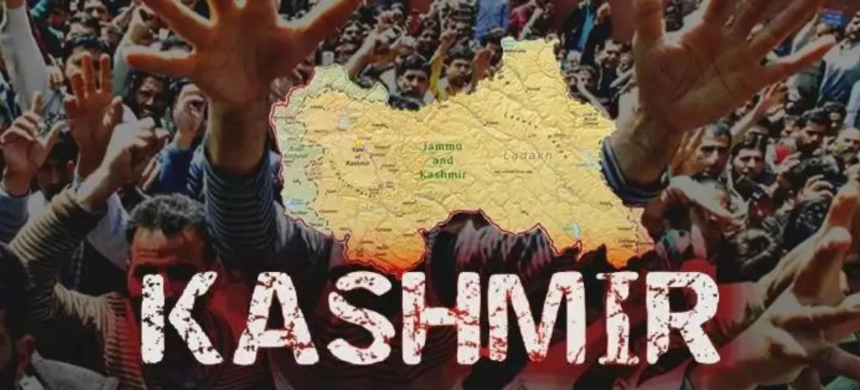Kashmir represents far more than a territorial dispute; it is the unresolved legacy of South Asia’s 1947 partition, where geography, identity, and post-colonial state formation converge with profound regional and humanitarian consequences. Located at the crossroads of Central and South Asia, Kashmir historically served as a key trade corridor along the Silk Road and holds ongoing strategic importance for access to the Persian Gulf and the Indian Ocean.
Often framed as a bilateral conflict between India and Pakistan, the Kashmir issue extends beyond this simplistic view, encapsulating the enduring trauma of partition and centering on the Kashmiri people’s struggle for identity, sovereignty, and human dignity. For Pakistan, Kashmir represents ethno-religious continuity, water security, and historical claims. For Kashmiris themselves, it is fundamentally a struggle for survival.
The region’s complexity arises from its diverse population, languages, and traditions, shaped by centuries of conquest and fragmented governance. The Muslim-majority Koshur community of the Kashmir Valley, known for its distinct Sufi traditions, language, and cuisine, coexist with Dogras in Jammu, Gujjars and Bakarwals, Ladakhi Buddhists, Shia Muslims in Kargil, and Shina- and Balti-speaking communities in the north. Each group’s unique historical trajectory has been impacted by imperial and post-colonial interventions, resulting in shared experiences of eroded autonomy and cultural disruption. What was once a source of resilience now faces immense strain under prolonged occupation and centralized militarized administration.
Read More: Trump Pledges Support to Resolve Kashmir With Pakistan, India
Kashmir’s history is marked by successive external dominations, ranging from pre-modern dynasties and 18th-century Afghan warlords to the Sikh Empire and the Dogra regime established in 1846 following British transfer to Gulab Singh. Dogra rule, more oppressive than British governance, imposed a feudal system on the predominantly Muslim population, deepening socioeconomic disparities and collective trauma that shaped Kashmir’s fate during the 1947 partition.
The partition of British India was a pivotal moment characterized by rapid withdrawal and strategic ambiguity from the British, leading to widespread displacement and violence. The division of territory often lacked consistent principles, vacillating between religious demographics and princely preferences. Kashmir, a Muslim-majority princely state ruled by the Hindu Maharaja Hari Singh, became a unique anomaly. Singh initially sought independence but acceded to India in October 1947 amidst tribal incursions from Pakistan. India’s military intervention, formalized by the contested Instrument of Accession rejected by many Kashmiris, triggered the first Indo-Pakistani war (1947-48). This conflict resulted in Kashmir’s division along the Line of Control (LoC), a de facto boundary still contested today. The United Nations Security Council’s 1948 Resolution 47 mandated a plebiscite to determine Kashmir’s future, but disagreements over preconditions have stalled its implementation, leaving the region divided and unresolved.
Currently, Pakistan-administered Kashmir—which includes Azad Jammu & Kashmir and Gilgit-Baltistan—has limited autonomy with legislative assemblies and efforts to preserve cultural heritage, though ultimate authority remains with Pakistan. Development across these areas remains uneven. Conversely, Indian-administered Jammu and Kashmir, once semi-autonomous under Article 370 of the Indian Constitution, lost this status in 2019. Since then, it has come under direct governance from New Delhi, facing contested electoral processes and extensive militarization.
The heavy militarization in Indian-administered Kashmir has led to serious human rights and security concerns. With over 700,000 troops deployed, it is among the world’s most militarized zones. Over the past seventy years, approximately 100,000 Kashmiris have lost their lives amid documented cases of rape, disappearances, torture, and arbitrary detentions. Human Rights Watch and other organizations report persistent violations including restrictions on free expression and political dissent. Practices such as collective punishment, including home demolitions, mirror strategies seen in other occupied territories. Curfews, checkpoints, pervasive surveillance, and frequent internet blackouts create a carceral environment that inflicts transgenerational psychological trauma on the population.
The abrogation of Article 370 in 2019 also paved the way for integration policies widely criticized as settler-colonial. New residency and land ownership laws for non-Kashmiris are seen as attempts to alter the region’s demographic and political composition. Meanwhile, tourism development—especially in places like Pahalgam—is promoted as a return to normalcy but is criticized for masking intensified occupation. Multinational hospitality and real estate projects contrast sharply with the decline of traditional Kashmiri industries such as handwoven carpets, weakened by administrative neglect and the severing of cross-border trade. Restrictions on communication, education, and healthcare further isolate Kashmir, creating a bifurcated economy that favors external capital amid securitized development. Trade prohibitions between Pakistani and Indian-administered Kashmir disrupt historic commercial and cultural ties.
Cultural erosion is a mounting concern, as the introduction of alcohol, narcotics, and nightlife—at odds with Kashmir’s conservative Islamic ethos—is viewed as a deliberate attack on its indigenous identity. This has drawn parallels to colonial-era tactics, including the opium wars and policies targeting indigenous peoples elsewhere. Events like a fashion show during Ramadan have provoked significant backlash. Narratives that dehumanize Kashmiris—depicting men as “stone pelters” resisting military forces and women as “mountain fairies” needing liberation—are common within the broader “war on terror” discourse. Environmental degradation further threatens this historically pristine region, adding to Kashmir’s strategic vulnerabilities.
Kashmir’s significance extends to its role as the source of the Indus River system, vital for Pakistan’s agrarian economy and regulated by the 1960 Indus Waters Treaty. India’s control over parts of Kashmir gives it leverage over Pakistan’s water supply, raising the specter of hydro-conflict. Incidents such as shelling near the Neelum-Jhelum Dam highlight this risk, which is compounded by climate change. Analysts describe India’s upstream dam projects as forms of eco-imperialism, weaponizing water resources against downstream Pakistan. Regional security theories underscore how Kashmir’s instability reverberates across South Asia’s geopolitical landscape.
China’s strategic interests deepen this complexity, particularly through the China-Pakistan Economic Corridor in Gilgit-Baltistan, part of the Belt and Road Initiative. Ladakh’s historical Buddhist ties to China add further layers to the region’s contested status.
Despite these pressures, Kashmiri resistance persists. Early political efforts, like those led by the Hurriyat Council, have evolved into decentralized, youth-driven dissent, with groups such as The Resistance Front reflecting widespread alienation. Pakistan, under international constraints, focuses on diplomatic and moral support rather than direct militancy. Stone pelting remains a symbolic act of defiance by a besieged population. Kashmiri perspectives vary, ranging from demands for independence to alignment with Pakistan, expressed through protests, strikes, cultural preservation, and international advocacy. India’s repressive tactics—including internet shutdowns, home demolitions, and information control—worsen its legitimacy crisis. Recent escalations, with attacks and disproportionate retaliatory strikes, reveal the fragility of the LoC ceasefire and the ongoing volatility of the conflict.
Kashmir remains a critical fault line in Pakistan-India relations and regional stability, demanding urgent resolution. Beyond geopolitical interests, it constitutes a severe humanitarian crisis, with Kashmiris bearing a heavy and enduring cost. Concepts like structural violence and regional security complexes illustrate that lasting peace requires addressing Kashmiri aspirations for self-determination. Pakistan’s role entails sustained international engagement leveraging legal and moral arguments and supporting Kashmiri civil society through soft power. Equitable transboundary water governance based on international law is essential to prevent ecological conflict. Kashmir tests the limits of global norms on occupation and governance, and delayed justice threatens both regional stability and fundamental equity for millions caught in this protracted conflict.











